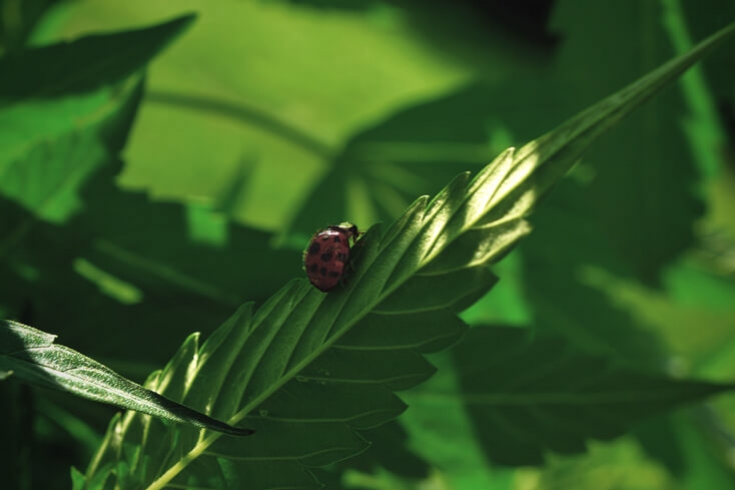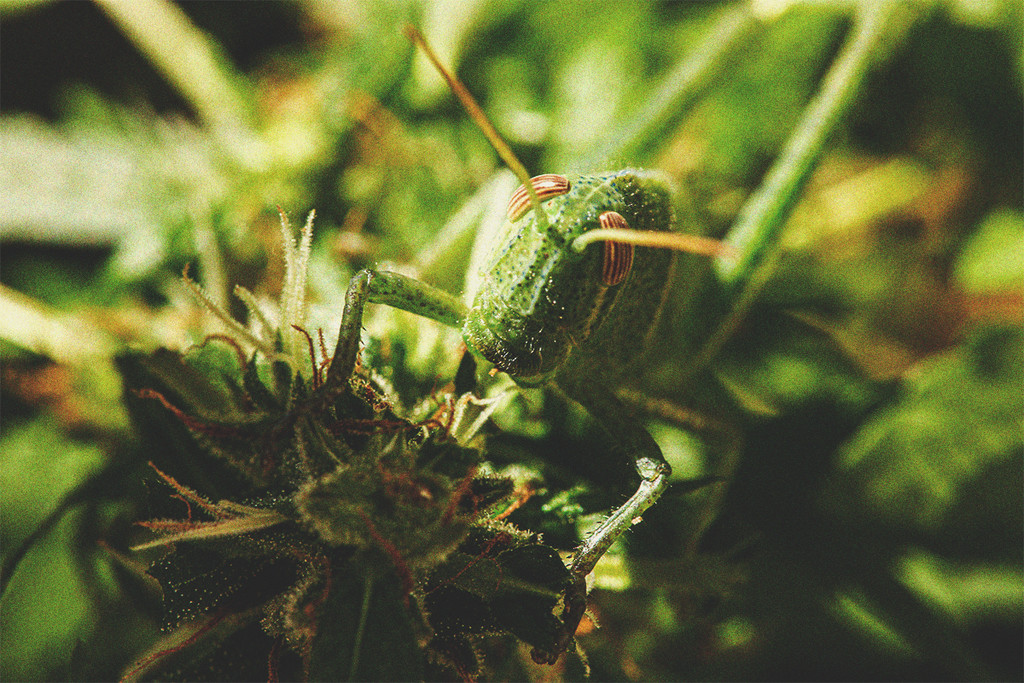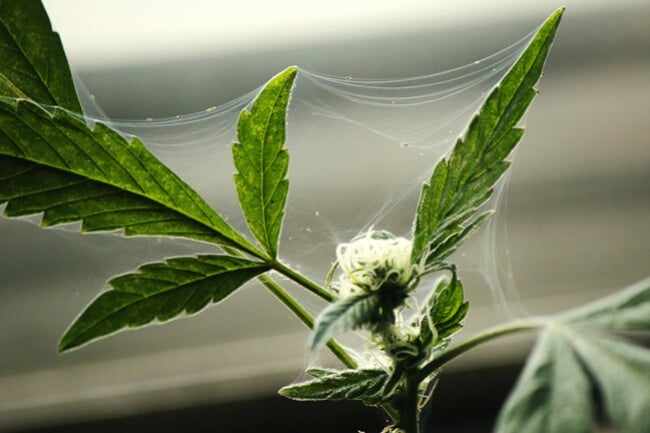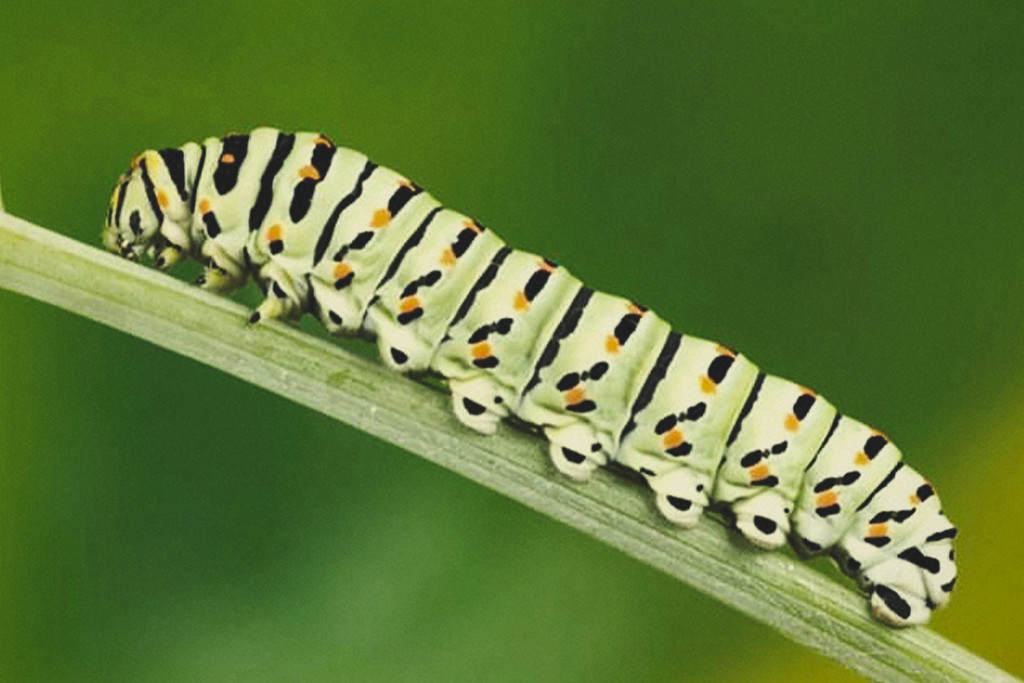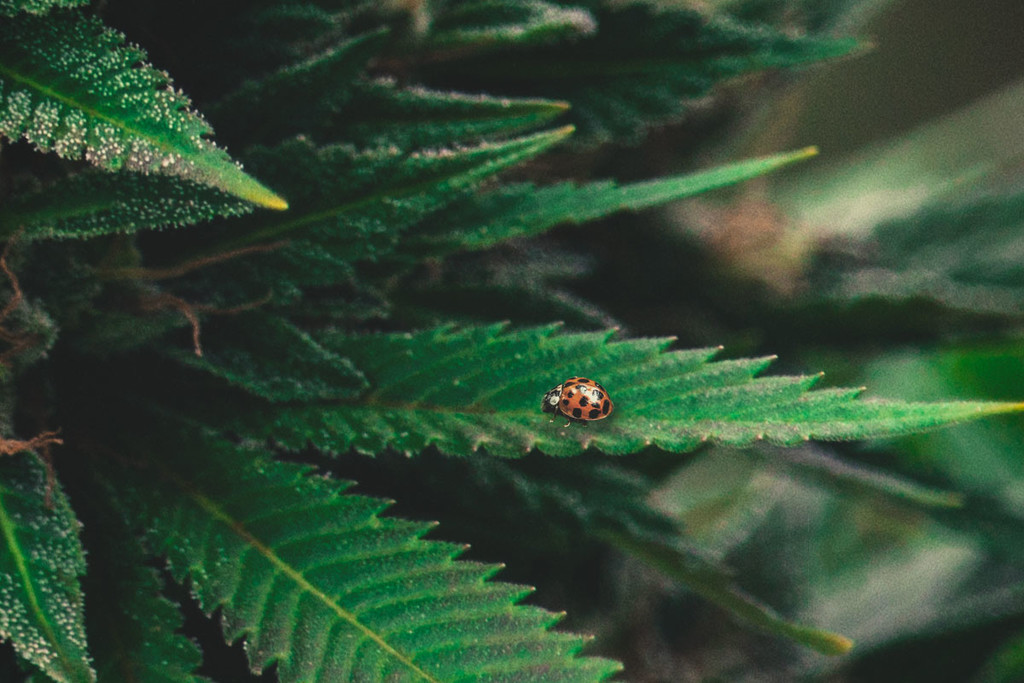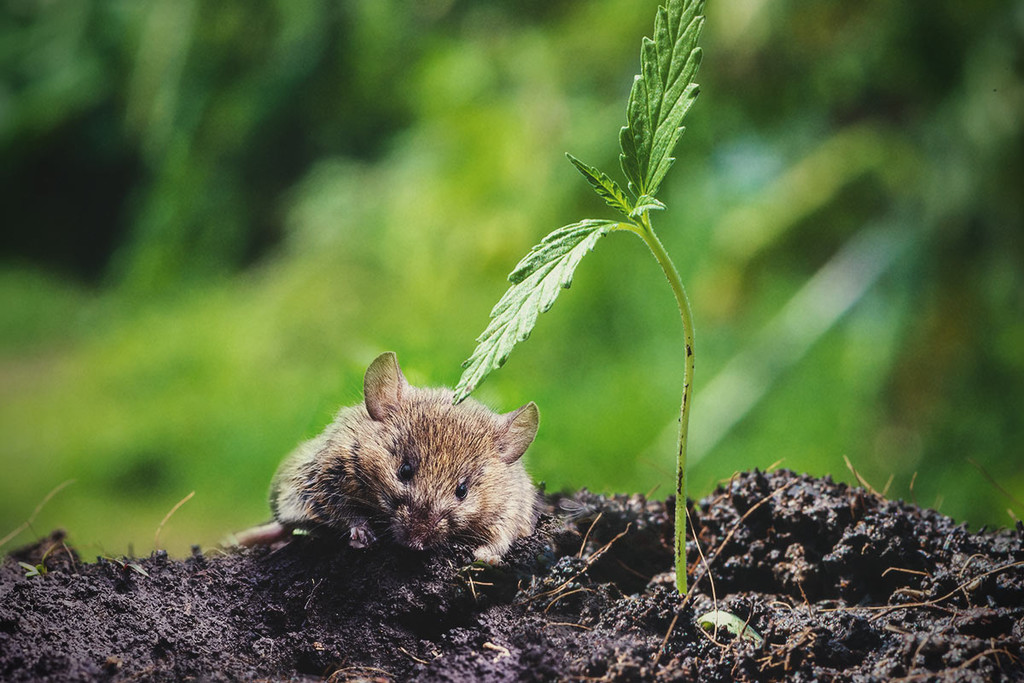.
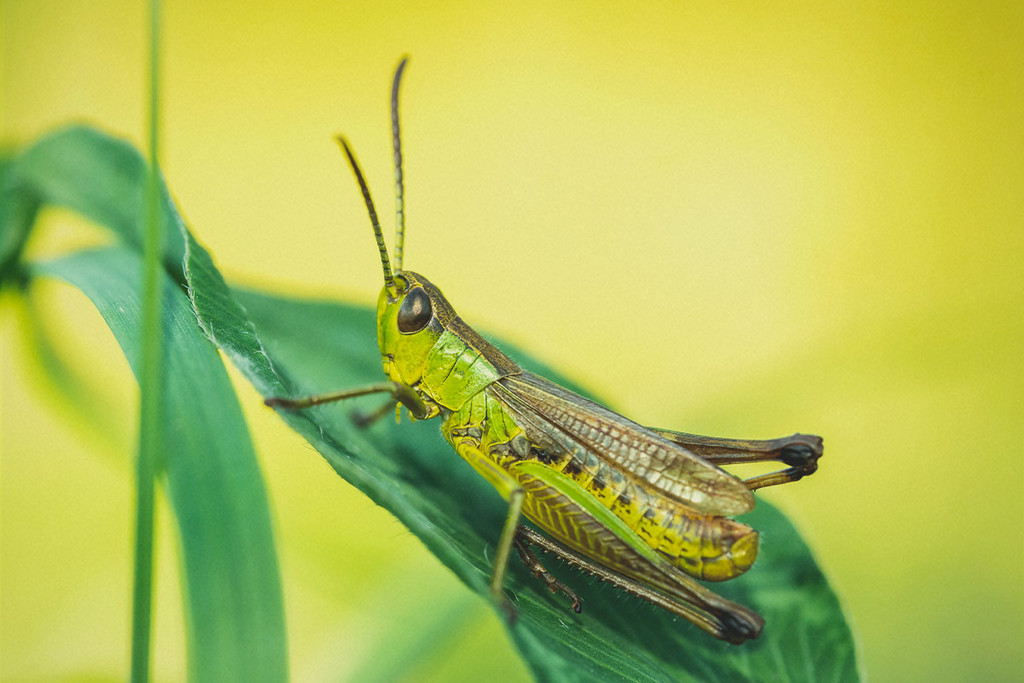
How To Identify, Treat, and Protect Your Cannabis From Grasshoppers
Grasshoppers love eating weed plants. Use our guide to identify signs of grasshopper damage, prevent them from showing up in the first place, and deal with them if they do appear. Luckily, it shouldn't take any serious chemical intervention to keep your plants thriving and grasshopper-free.
Contents:
- What do you need to know about grasshoppers?
- What does cannabis grasshopper damage look like?
- How to treat a grasshopper infestation
- How to prevent grasshopper damage when growing cannabis
- Are grasshoppers and crickets the same?
- Now you know how to protect your grow from grasshopper damage
- How to deter large insects
- Shield your weed from small insects
- Keep your crop safe from hungry animals
Growing cannabis outdoors comes with moments of pure bliss. Not much compares to tending to luscious plants in the summer sun. However, with this privilege comes a battle between human stewardship and nature.
Many pests will patrol your garden in search of tasty cannabis stems, leaves, and flowers, including grasshoppers. Discover how to spot a grasshopper infestation, and learn what you can do to treat and prevent it.
What Do You Need To Know About Grasshoppers?
Grasshoppers have developed an appetite for fresh cannabis over a very long time. These critters are the oldest living group of chewing herbivorous insects, and they can do serious damage to a cannabis crop given the chance. In fact, these voracious creatures are capable of wiping out entire fields of crops.
Their herbivorous inclination means they take a liking to the juicy stems and leaves of cannabis plants. They use their mouthpieces to tear off chunks of vegetation, and, if left to do their thing, your plants will lose much of the apparatus they depend on to photosynthesise, leading to stunted growth and potential fatalities.
While grasshopper damage can cause harm to your crop, these specimens also play a key role in the ecosystem, serving as a food source for birds and other animals. As with everything in gardening, dealing with grasshoppers revolves around balance and equilibrium.
What Does Cannabis Grasshopper Damage Look Like?
Cannabis growers can tell when grasshoppers are about without physically seeing them. These hungry herbivores leave key signs of damage that serve as telltale signs.
-
Dirt Mounds
Some types of grasshopper leave small, volcano-shaped mounds of dirt around the garden. As they burrow underground, they kick up dirt to the surface that eventually piles up. If you see these popping up near your plants, chances are their root systems are at risk. Plus, these tunnels can adversely impact the structure of the soil.
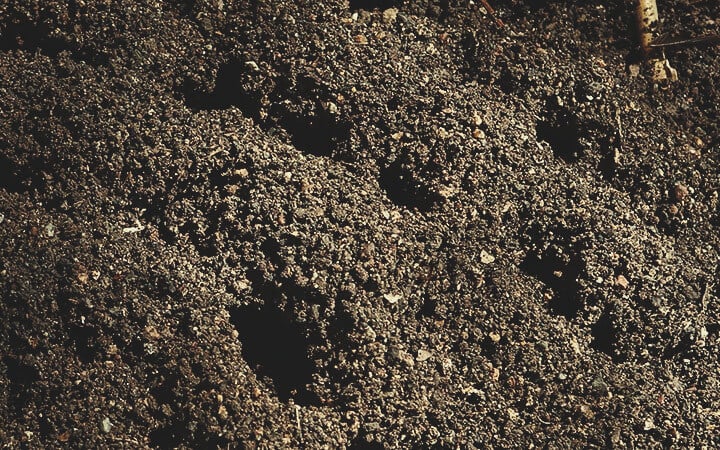
-
Puncture Marks
When grasshoppers suck into stems, they leave puncture marks in their wake. Stems are a crucial component of nutrient transport and plant structure, and excess damage can lead to plant losses.
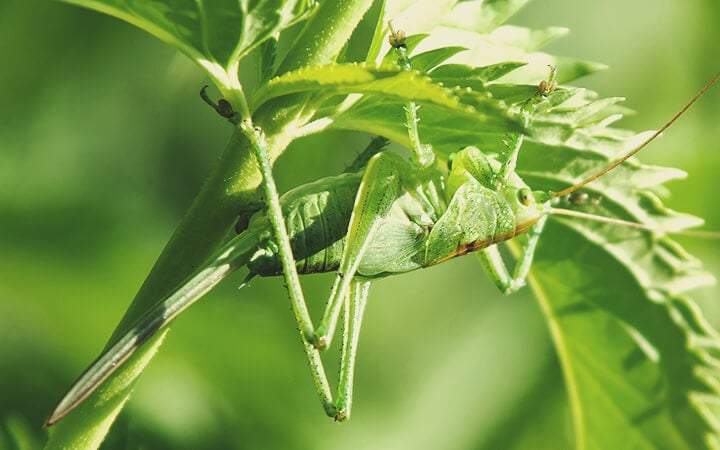
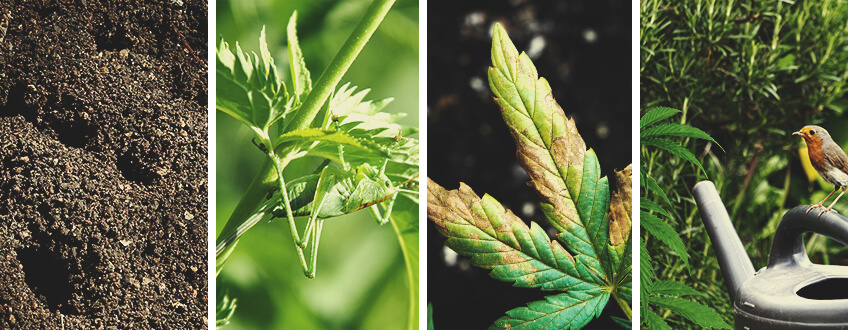
-
Dry, Brown Leaves
Grasshopper damage can stress plants by impacting nutrient transport systems and reducing the capacity for leaves to photosynthesise properly, leading to a sorry complexion and overall appearance.
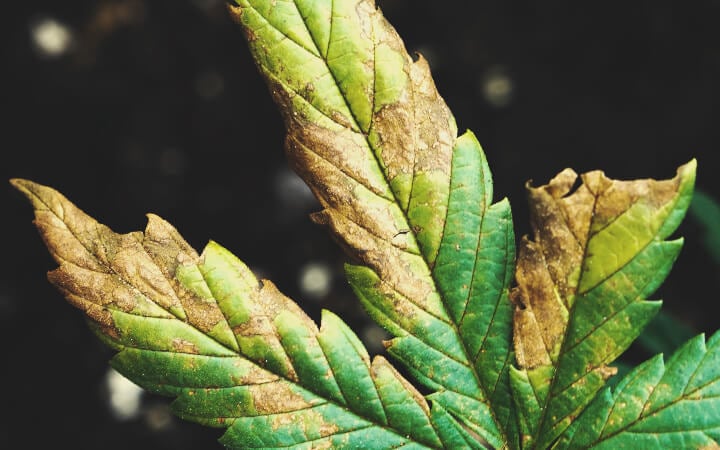
-
Increased Wildlife Presence
Just like grasshoppers love to munch on cannabis plants, other animals love to snack on grasshoppers. Regular appearances of birds, foxes, and rats can signify the presence of grasshoppers in your garden.
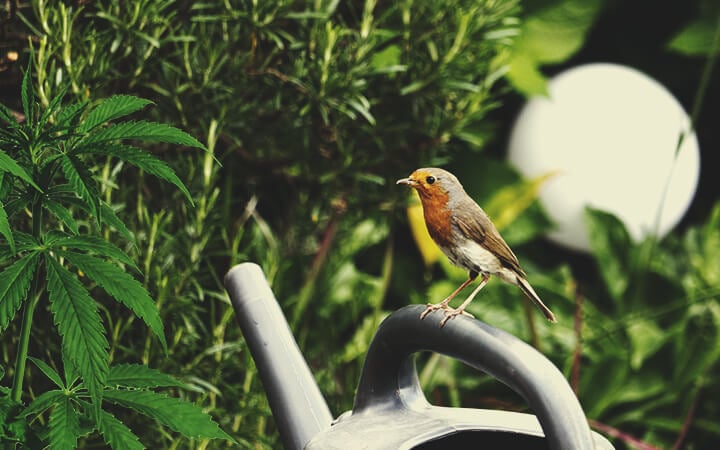
How To Treat a Grasshopper Infestation
After identifying these signs, you need to take action. A handful of grasshoppers are a fine addition to the biodiversity of your garden. However, if you start to notice significant damage, you need to save your plants.

Pesticides: Many gardeners opt to use synthetic pesticides to deal with pest species. Although they do their job, these chemicals can have a far-reaching impact on your plants and the environment that prompts us to advise against their use. As well as killing other beneficial insect species, they can accumulate in your flowers after harvest.
Pesticides: Many gardeners opt to use synthetic pesticides to deal with pest species. Although they do their job, these chemicals can have a far-reaching impact on your plants and the environment that prompts us to advise against their use. As well as killing other beneficial insect species, they can accumulate in your flowers after harvest.
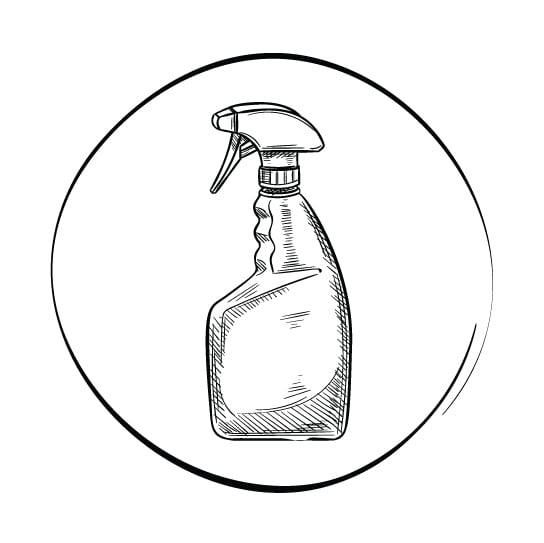
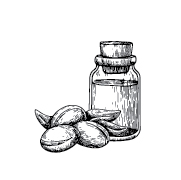
Neem Oil: Neem oil works as a natural pesticide with fewer negative effects than commercial chemicals used for the same purpose. This organic application can help to repel grasshoppers from chewing on cannabis plants, and also prevents them from laying eggs and raising the next leaf-munching generation.
Neem Oil: Neem oil works as a natural pesticide with fewer negative effects than commercial chemicals used for the same purpose. This organic application can help to repel grasshoppers from chewing on cannabis plants, and also prevents them from laying eggs and raising the next leaf-munching generation.
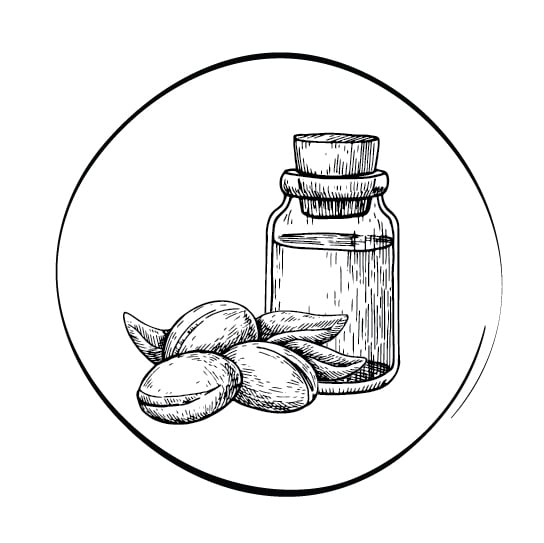
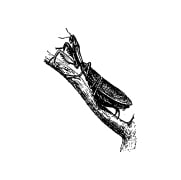
Encourage Natural Predators: Attract natural grasshopper predators to help you deal with the problem while fostering healthy biodiversity. Spiders and mantids love to hunt grasshoppers, and you can draw these species into your garden by developing polycrops of plants and natural habitats.
A thick layer of mulch in your garden provides an excellent habitat for spiders to populate. As well as drawing in these beneficial creatures, mulching helps to retain moisture and means you won’t have to water as much. This practice also shields the top layer of soil from sunlight and protects the valuable communities of microbes below.
To attract mantids—the ultimate hunters—plant shrubs such as lavender around your garden to provide a habitat for them to position themselves and lay their eggs. Once you establish some compatible plants, you can also purchase eggs and place them throughout your patch.
Encourage Natural Predators: Attract natural grasshopper predators to help you deal with the problem while fostering healthy biodiversity. Spiders and mantids love to hunt grasshoppers, and you can draw these species into your garden by developing polycrops of plants and natural habitats.
A thick layer of mulch in your garden provides an excellent habitat for spiders to populate. As well as drawing in these beneficial creatures, mulching helps to retain moisture and means you won’t have to water as much. This practice also shields the top layer of soil from sunlight and protects the valuable communities of microbes below.
To attract mantids—the ultimate hunters—plant shrubs such as lavender around your garden to provide a habitat for them to position themselves and lay their eggs. Once you establish some compatible plants, you can also purchase eggs and place them throughout your patch.
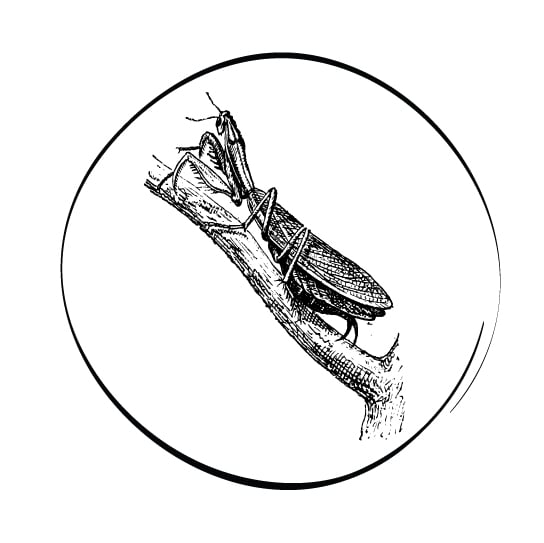
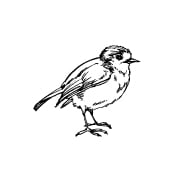
Build Bird Perches: Birds also love to feast on grasshoppers. Build bird perches and place birdhouses and baths around your garden to attract these expert aerial predators.
Build Bird Perches: Birds also love to feast on grasshoppers. Build bird perches and place birdhouses and baths around your garden to attract these expert aerial predators.
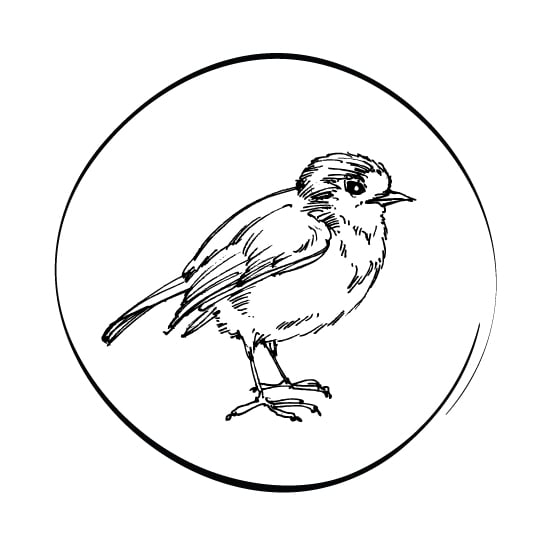
How To Prevent Grasshopper Damage When Growing Cannabis
As always, prevention provides a better solution than a cure. Before allowing grasshoppers to gain a foothold in your garden, you can exercise the methods below to stop an infestation from happening in the first place.
-
Row Covers
Cover your beds and rows with insect netting. This material allows light, air, and water through while working as an effective barrier against grasshoppers and other hungry insects.
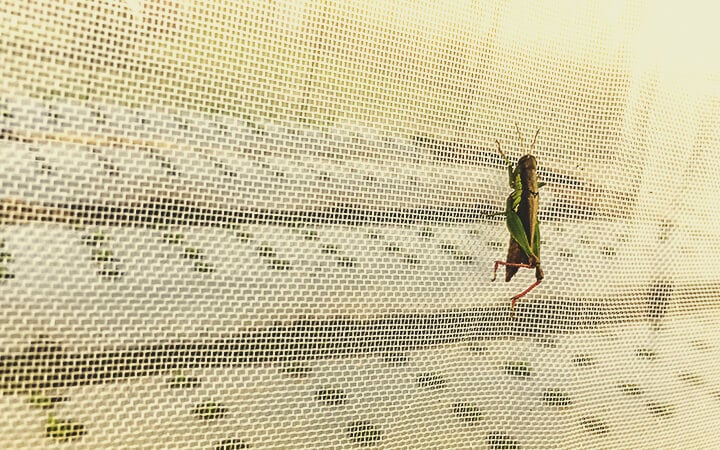
-
Soil Care and Housekeeping
Keep your beds clean and well-kept. Remove weeds, and keep the soil coated in a firm layer of mulch. This will allow your plants to thrive and bring in beneficial insect and animal species.
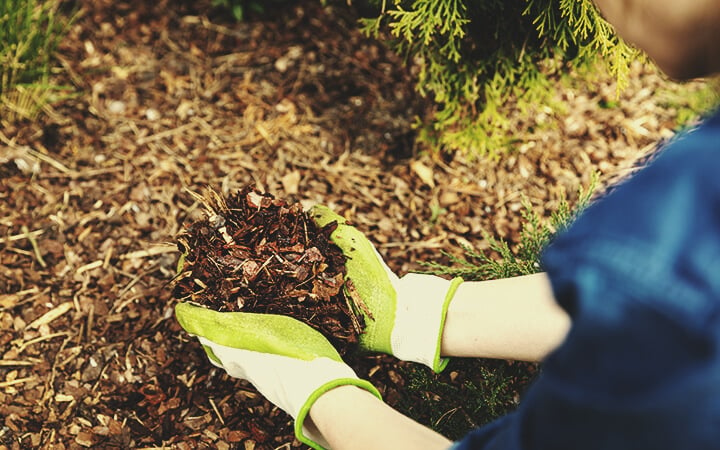
-
Companion Crops
Sow beneficial companion species at the same time as your cannabis seeds. Raise species such as lavender, chamomile, basil, and dill alongside your cannabis plants to ramp up biodiversity and provide habitats for mantids and spiders. The best part? You can harvest these plants throughout the season to make herbal teas and garnish dishes.
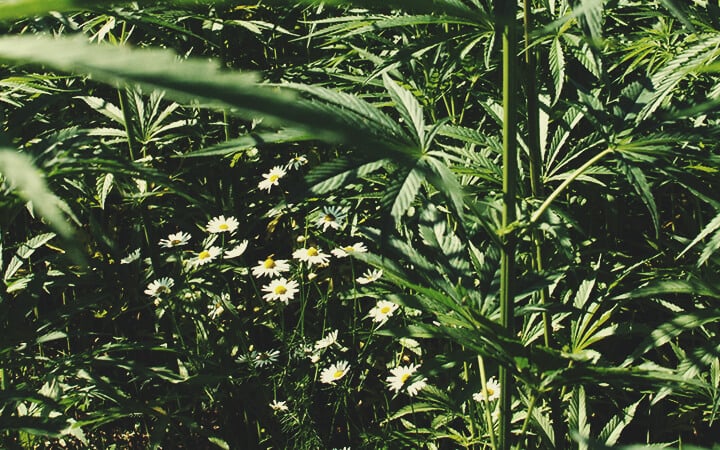
-
Keep Fowl and Guinea Hens
If you have space, keeping fowl and guinea hens can seriously prevent grasshopper numbers from getting out of control. These birds will go out of their way to hunt down these protein-rich snacks. They also help to create a closed-loop system. Feed them kitchen scraps and garden waste, and they’ll gift you fertile droppings in return (great for increasing the fertility of your soil).
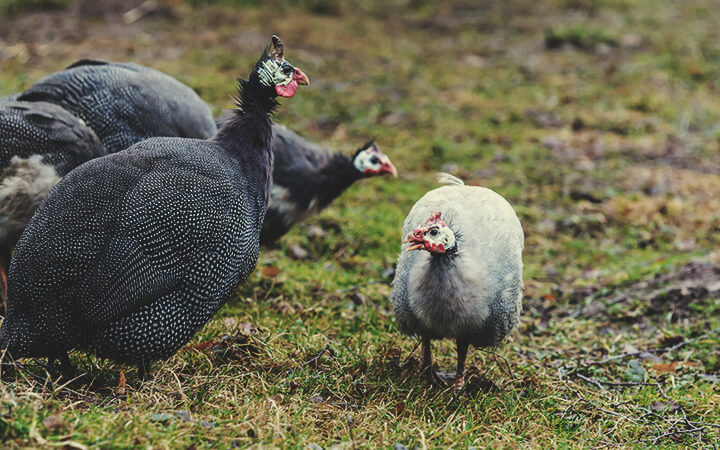
-
Try All-Purpose Flour
Grasshoppers really can’t handle all-purpose flour, but they’ll eat it anyway. Scatter some around your plants as a safeguard. If they show up, they’ll gobble it down—a fatal mistake.
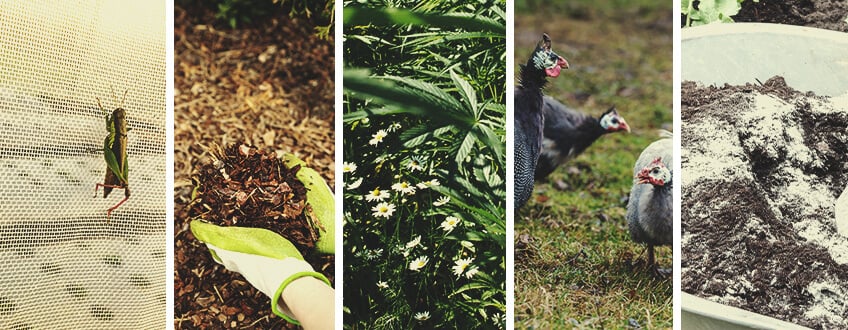
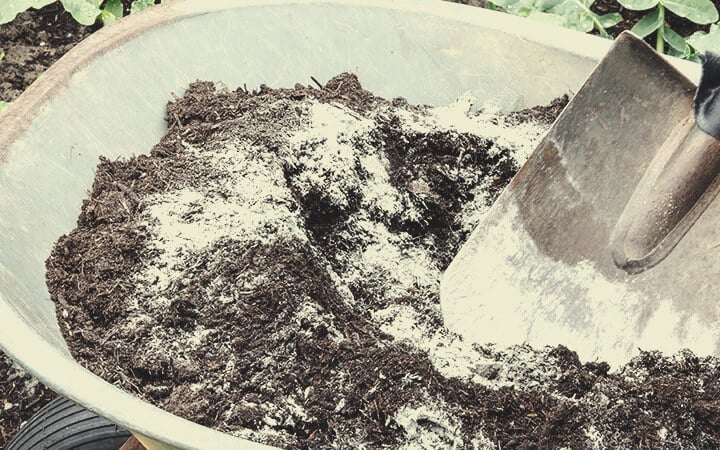
Are Grasshoppers and Crickets the Same?
Grasshoppers and crickets are different creatures. Although they seem almost identical to the naked eye, they feature subtle differences. For one, grasshoppers possess short antennae, whereas crickets have longer antennae.
Crickets also make a “chirping” noise by rubbing their wings together, whereas grasshoppers rub their long hind legs against their wings.
Small differences aside, cannabis growers should use different strategies to successfully deal with crickets.
Now You Know How To Protect Your Grow From Grasshopper Damage
There you have it. You’re now equipped with the knowledge to tackle yet another pest species. Aim to implement preventative measures first to avoid having to use time and resources to combat a full-fledged invasion. Happy growing!

















































